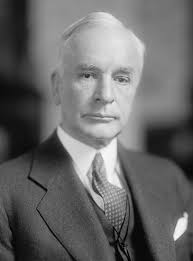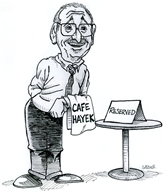The Wall Street Journal reports on a small American manufacturing company that Trump’s protectionism is driving to the verge of ruin. A slice:
For weeks, Woldenberg and his roughly 500 employees—most at a suburban Chicago headquarters—have hastened to halt shipments, reroute cargo, raise prices and freeze expansion plans. The companies sued President Trump and other administration officials in federal court, winning a reprieve that is now under appeal and on hold. On Wednesday, the companies asked the Supreme Court to intervene in their favor. [DBx: Thus far, the Supreme Court has refused to do so.]
Through it all, the most pressing questions are how to move toy production out of China, where to move it—and how to get tons of manufacturing equipment there in time to meet deadlines for end-of-the-year holidays.
“It’s almost like an evacuation,” Woldenberg said. “We don’t have a place to make important items our reputation is built around.”
Lining up new factories in another country is just the start. Heavy manufacturing-molds must be transported hundreds or thousands of miles by truck or ship and then reassembled. Quality-control processes and safety inspections must be re-created.
On Woldenberg’s list: Vietnam, India and Cambodia. One place he isn’t considering: the U.S. American injection-molding factories aren’t set up—or cost-effective—for the painting, assembly and labor-intensive finishing the toys need, he said.
Scott Sumner is highly critical – and justly so – of Trump economics advisor Kevin Hassett for recently making the absurd assertion that in textbook economics tariffs don’t raise prices. [DBx: Even if you’re convinced to your marrow that tariffs don’t raise prices – and even if (contrary to fact) tariffs in reality don’t raise prices – it’s demonstrably false to assert that economics textbooks say that tariffs don’t raise prices. This claim by Hassett is as ludicrous as would be a claim by a prominent physicist that physics textbooks say that gravity does not affect shiny rocks.]
Last month, Greg Mankiw talked with Gerard Baker about prominent Trump policies.
Wall Street Journal columnist Andy Kessler decries Trump’s move to nationalize the American steel industry. Two slices:
Last week brought us the Golden Share. No, that isn’t a James Bond movie, or a detail from the Steele dossier, although the plot is as sinister. It’s the Trump administration’s first step to nationalize the steel industry.
In exchange for approval of Nippon Steel’s merger with U.S. Steel, the government receives a single preferred share, which includes voting rights and all sorts of control over U.S. Steel’s ability to close factories, invest capital and relocate jobs outside the U.S. This “Golden Share” is a bad idea. Nationalization is a fool’s errand, a slippery slope to fascism’s “government controlling the means of production.” Don’t do it.
President Harry S. Truman tried to nationalize the steel industry in 1952. The Supreme Court ruled against it. President John F. Kennedy wrote a strong letter to a dozen steel companies in 1961 telling them not to raise prices because “the clear call of national interest must be heeded.” Some raised prices anyway and later reduced them under pressure from Kennedy. Thus began the long, steady decline of steel in the U.S. that we’re still trying to arrest.
Now that we’re in the steel-cage driver’s seat, will regulators institute price controls to protect the golden share? Tariffs are already an attempt at price manipulation. Where does it end?
Other examples have been less than stellar. After Penn Central’s collapse in 1970, Congress created the National Railroad Passenger Corp., better known as Amtrak, to run intercity passenger trains—nationalizing much of Penn’s key infrastructure. It has been a sinkhole for capital and an embarrassment. We’ve nationalized banks (Continental Illinois), coal mines and quasi-government agencies (Fannie and Freddie are still government-owned 17 years later). But the concept is mostly foreign—think Venezuela and its nationalized oil company, Petróleos de Venezuela S.A., a total disaster. This expression sums it up: “Governments don’t pick winners and losers, they consistently pick losers.”
…..
Our stock market is the most valuable in the world, and entrepreneurs flock here from all over to start companies specifically because we don’t have government ownership or interference at the board level. That’s why the future is invented here. If we damage that with golden shares and other anticorporate policies, we’ll damage access to capital for the next wave of great businesses.
Not to torture the metaphor, but the Bond-like “The World Is Not Enough” for government meddlers will kill our golden goose and turn our economy into “Skyfall.”
“An outdated supply management system—designed to protect Quebec’s small dairy farms—is undermining Canada’s global trade ambitions and hurting its own consumers.”
A great entrepreneur – FedEx founder Fred W. Smith – has died; the Editorial Board of the Wall Street Journal remembers him. A slice:
In recent years Smith advocated free trade and its benefits even as the political class turned against it. His voice was especially valuable in reminding Americans that the root of the country’s prosperity has been its openness to trade and global competition.
“Fred Smith was one of the finest Americans of our generation,” said former President George W. Bush about his Yale fraternity brother. “He was a citizen, not a spectator.” Few Americans have contributed as much to the well-being of their country.
Andrew Stuttaford is correct: ESG has always been political. A slice:
Attempts were made (most notoriously the claim that adopting ESG would mean “doing well by doing good”) to argue that ESG was a reliable route to outperformance (it wasn’t) and later, more modestly, that it was a good way to reduce risk (it wasn’t). That’s not to deny that here and there were elements within ESG that could add to investor return, but most of them would have already been covered by “C” (common sense).
In reality, ESG was, from its very beginnings as an idea promoted by the U.N. (a possible clue, I think, Dr. Watson), designed to advance a progressive agenda by diverting asset managers (and by extension corporate managements) away from what, barring specific instructions to the contrary, was their primary duty, generating investor and shareholder return. As such, it was a clever way of using other people’s money to promote changes better decided in a legislature than in the C-suite or on Wall Street. And as such it was not only a form of theft, but profoundly undemocratic.
Alex Tabarrok shares a wonderful video on the eradication of small pox.
People talk about capitalism and socialism and communism. There’s only two kinds of economic systems: the market-driven and the government-directed. That’s it! The more you move toward a state-directed economy, the less efficient and more corrupt it becomes.


 Basically, every step of Trump’s mentality on trade is wrong. First of all, imports are good. We like to import coffee. We like to import cars. We like to import the inputs we need for American manufacturing. Second, trade deficits don’t reflect other countries’ tariffs and trade policies. There’s countries with huge tariffs that run large trade deficits. There’s countries with low tariffs that run trade surpluses. Third, our retaliation against them is going to shrink imports, but it’s also going to shrink exports. And that hurts consumers on the import side; it hurts American workers on the export side. Every step of his reasoning and fixation on trade deficits is just the wrong way to think about trade.
Basically, every step of Trump’s mentality on trade is wrong. First of all, imports are good. We like to import coffee. We like to import cars. We like to import the inputs we need for American manufacturing. Second, trade deficits don’t reflect other countries’ tariffs and trade policies. There’s countries with huge tariffs that run large trade deficits. There’s countries with low tariffs that run trade surpluses. Third, our retaliation against them is going to shrink imports, but it’s also going to shrink exports. And that hurts consumers on the import side; it hurts American workers on the export side. Every step of his reasoning and fixation on trade deficits is just the wrong way to think about trade. The more economic power the [Chinese] Communist Party takes, the more knowledge and outside initiative is lost. The difference between the popular image of China and what research actually shows about it could hardly be greater. Our politicians and media paint horrifying images of China’s brilliant strategic planning, but in the vast literature on China’s economy there is hardly a single study that even attempts to argue that a specific industrial policy has created real commercial success.
The more economic power the [Chinese] Communist Party takes, the more knowledge and outside initiative is lost. The difference between the popular image of China and what research actually shows about it could hardly be greater. Our politicians and media paint horrifying images of China’s brilliant strategic planning, but in the vast literature on China’s economy there is hardly a single study that even attempts to argue that a specific industrial policy has created real commercial success. When I initially started doing research and tracing the origins of this debate after I found FDR’s Secretary of State Cordell Hull being referred to as the ‘Tennessee Cobden.’ I was quite surprised and wondered when these references about British free trade entered American political discourse. I came to realize that to trace the origins of Cobdenism in the United States, I needed to focus not on the middle of the twentieth century, when histories of US trade liberalization usually start, but on the 1830s and 1840s. It is there that you see radical American intellectuals clearly starting to embrace Cobden’s ideas.
When I initially started doing research and tracing the origins of this debate after I found FDR’s Secretary of State Cordell Hull being referred to as the ‘Tennessee Cobden.’ I was quite surprised and wondered when these references about British free trade entered American political discourse. I came to realize that to trace the origins of Cobdenism in the United States, I needed to focus not on the middle of the twentieth century, when histories of US trade liberalization usually start, but on the 1830s and 1840s. It is there that you see radical American intellectuals clearly starting to embrace Cobden’s ideas.
